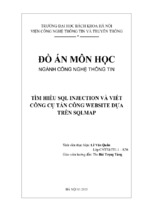Chapter 12: Using Software as a Service
If at the end of that trial you decide that this product is really good, the
company may decide that it is time to buy. Even though you might eventually want to have the product used by 50 people in the company, you might
actually buy an entry-level configuration like a 5-user pack to get started. If
the individuals in the company really like the product, you can add packages
until you support all 50 users.
Determining the right revenue model costs
What does this mean in terms of the revenue model for vendors and how customers should think about weighing the costs between traditional perpetual
licenses and SaaS-based license? Look at these numbers over a five-year
period. It can be complex to work out all the details, but here is a general rule:
✓ Take the initial cost for the traditional software purchase.
✓ Add an annual fee of 20 percent for maintenance and support.
✓ Consider IT costs (including support services and hardware renewal,
and so on. (For example, does your data center have enough room for
the new CRM application? Will you need to add support staff or new
management software?)
The other factor to consider is that the vendor might do everything it can to
make you a customer. They might have some special incentives. For example,
many SaaS vendors offer packaged deals. (An instance is if you decide to pay
for a full year upfront, the price will be less; if you purchase large numbers of
licenses, the costs will also be less.)
Calculating two examples
If you buy a traditional software product, it will cost you a one-time fee of
$100,000. Now you have to add an annual fee of 20 percent for maintenance
and support. If you look at the costs over five years, for example, you may
determine the following: Software will cost $100,000; maintenance expenses
will add another $100,000 over five years, for a total five-year cost of
$200,000.
You have to consider all the related infrastructure costs. (Take a look at
Chapter 21 for a full discussion on the economics of the cloud.) We can’t
begin to give you a sense of what that will cost you because every situation
is different. For example, you might already have a sophisticated data center
with excess capacity and sufficient staff to support an additional application.
Or you might have to add everything from new hardware to networking to
backup and support personnel. Do you charge each department based on
their percentage usage of data center resources? Do you divide costs evenly
between all departments as you would utilities such as electricity? No matter
how your organization calculates expenses, that must be taken into account.
143
144
Part III: Examining the Cloud Elements
Many small- and medium-sized businesses lack or don’t want the data centers
that their larger counterparts have. Larger companies that can calculate the
long-term impact of adding applications are also looking seriously at the SaaS
cloud model.
If you go the SaaS route, here’s what you’re looking at: You determine that to
support 50 users, it will cost you between $10 and $150 per user, per month.
That figure includes support, general training, and data center services. Even
if you take the high-end estimate of $150 per user, the cost of using the CRM
SaaS application for those 50 users for 5 years will run about $37,500 — far
less than the $200,000 cost of on-premise software, even when you add other
costs (such as customization of business processes within the application
and personnel training).
We can’t give you an absolute figure; do your homework and compare all
aspects of running software before you decide which approach is best for you.
Prices can vary widely from an open-source version that offers support for a
price to vendors that provide the software plus full integration services.
For example, you might look at an open-source CRM product. Although the
basic product is free, you get no support or software upgrades, and must rely
on finding patches and bug fixes from the community. If you’re very technical, that might be a fine choice, but many customers want to pay for support
to avoid a lot of headaches.
The value of the ecosystem
When SaaS vendors become well-established brands in the market, they
attract an ecosystem (a set of partners that works directly with a key vendor,
both in technical and go-to-market terms) that sees the value of linkage.
This is how it works: A SaaS vendor with thousands of paying customers
opens up its programming interfaces to other independent software vendors.
These vendors create software that sits on top of the infrastructure of the
SaaS vendor. Therefore, they can get to market quickly because they only
have to write their industry-specific code. They don’t worry about messaging
middleware, or business process services, or other complex programming. In
addition, they can market their software to the SaaS vendor’s happy customers (either through the SaaS vendor’s portal or through the partner’s direct
sales force). This has become a standard model used by SaaS vendors to
build their brand and power in the market.
If you’re a customer who has licensed an SaaS application, you’ll probably
find another application that’s built on the same infrastructure that easily
integrates with what you already have.
Chapter 12: Using Software as a Service
Building an app on top of Salesforce.com
CODA is a software company that has been
in the financial services packaged software
market since the 1970s. The company had
always partnered with on-premise software vendors such as HP, Digital Equipment
Corporation, and IBM. In addition, the company
liked to move to new platforms as they emerged
(including the mainframe, the minicomputer,
and client/server).
There came a time when CODA wanted to move
quickly to take advantage of the movement to
Software as a Service. Moving to a new platform was based on the ambitious plan to do
for financial products what Salesforce.com
has done for CRM. Needless to say, it was an
ambitious goal. CODA management began to
appreciate the potential for SaaS as a way to
build customers faster than the sales process
of on-premise software. Before deciding to
use sForce (Salesforce.com’s development
platform), the company performed a return-oninvestment analysis.
The challenge was the cost of writing the code
from scratch internally. Basically, development
management realized that they would have
to write for a multi-tenancy environment that
would have required several years of work to
get the right infrastructure services in place.
They simply couldn’t justify the expense or the
time required for development. Without worrying about any specific software infrastructure,
CODA’s developers focused on customerfacing features such as specialized processes
for different industries.
Unlike some of the smaller companies that have
built on top of sForce, CODA is a large company
that serves mid-market companies. Salesforce.
com needs CODA as much as CODA needs
them. Salesforce.com needed to prove to the
market that its platform could support a major
application. CODA’s application is happy with
its relationship and is saving time and money.
The test will be if customers adopt its new SaaS
platform.
CODA wrote its application with Salesforce.
com’s Java-like language called APEX.
Therefore, the company’s locked into the
Salesforce.com platform. From a go-to-market
perspective, however, this is a plus because
Salesforce.com will help CODA sell into its customer base.
Examining Types of SaaS Platforms
Because SaaS has been around longer than most other types of cloud computing, hundreds — if not thousands — of companies are trying to become
leaders. It isn’t easy. They face many obstacles. For example, it costs a lot of
money initially to build the type of data center and the applications that can
scale to support thousands of companies (and potentially millions of individual users). It takes time to turn a one-month free trial into a long-term contract. Despite these obstacles, some very successful SaaS companies exist,
ranging from emerging players to the big IT companies.
145
146
Part III: Examining the Cloud Elements
We don’t have the room to give you an exhaustive list of every company you
might find, but we plan to give you a taste of what is out there. (In Chapter
23, we list resources that will help you identify even more players.)
It can be overwhelming when you look at how many companies have created
SaaS versions of their products — even companies whoseprimary focus is
the on-premise model feel compelled to offer customers a SaaS version of
their offerings.
To help you make sense of this complicated world, we divide SaaS into three
categories:
✓ Packaged software: This is the biggest area of the SaaS market.
Packaged software comes in many different flavors: customer relationship management, supply chain management, financial management,
and human resources, to name the most common. These integrated
offers focus on a specific process, such as managing employees’ benefits, salaries, and annual performance reviews. These products tend
to have several characteristics in common: They’re designed with specific business processes built in that customers can modify. They have
moved in great numbers to the cloud because customers were finding
the platforms too hard to manage.
✓ Collaborative software: This increasingly vibrant area of the market is
driven by the ubiquitous availability of the Internet, combined with the
fact that teams are located all over the world. This area is dominated by
software that focuses on all sorts of collaborative efforts including Web
conferencing, document collaboration, project planning, instant messaging, and even email. In a sense, it was inevitable that these platforms
would move to the cloud: These tasks occur throughout the organization and need to be easily accessed from many locations.
✓ Enabling and management tools: We brought these two areas together
because they support the development and the deployment of SaaS.
What’s in this category? Think about the development tools that developers need when creating and extending a SaaS platform; also think
about the testing, monitoring, and measuring that a customer and the
developer need. Also consider the compliance issues related to the use
of this type of software in the real world. These issues are included in
this third category.
In the next section, we give you a taste for the vendors in each of these categories, what they offer customers, and the issues you should consider. We
can’t possibly do this topic justice, but we give you a road map for how to
understand the offerings and issues.
Chapter 12: Using Software as a Service
Packaged Software as a Service
We write a lot about how Salesforce.com created customer relationship management (CRM) as a service. It took a few years, but the company invested in
its infrastructure, built a flexible and modular application, and made the navigation easier. But as with any successful venture, Salesforce.com competitors
soon began entering the market in droves.
What companies are out in the market today that you should look at? It isn’t
as straightforward as it might sound. This is a dynamic market, so whatever
company looks promising today could be gone tomorrow. On the other hand,
the small emerging company that looks too new to consider could become
a major force. Likewise, companies that have been successful as on-premise
software providers are streaming into the SaaS market and could become
viable competitors.
Companies in the packaged software market include the following:
✓ Netsuite, like Salesforce.com, offers a CRM foundation. Since its founding
in 1998, Netsuite has added a number of modules for enterprise resource
planning (ERP) application including financial capabilities, e-commerce,
and business intelligence.
✓ Intuit provides a Financial Services Suite of products that support
accounting services for small- and medium-sized businesses. The company provides a rich set of interfaces that enables partners to connect
their services and applications into its environment.
✓ RightNow provides a CRM suite of products that includes marketing,
sales, and various industry solutions.
✓ Concur focuses on employees spend management. It automates costs
control via automated processes.
✓ Taleo focuses on talent management tasks.
✓ SugarCRM is a CRM platform built on an open-source platform. The
company offers support for a fee.
✓ Constant Contact is a marketing automation platform that partners
directly with Salesforce.com and other CRM platforms. They automate
the process of sending emails and other marketing efforts.
Some of the traditional on-premise software companies have also moved into
the packaged SaaS market, including
✓ Microsoft with its Dynamics package
✓ SAP with its By Design offering for the small- to medium-sized business market
✓ Oracle with its On Demand offering based on its acquisition of Siebel
Software
147
148
Part III: Examining the Cloud Elements
Collaboration as a Service
Collaboration is one of the natural markets for SaaS. There’s enough bandwidth and all companies are connecting to the Internet. In addition, more
companies than ever have remote offices and workers across the globe. A
team may be easily be spread across 100 locations in 40 different countries!
With the availability of SaaS-based collaboration services, things have
changed dramatically. Although it hasn’t yet surfaced as a major market, we
expect that there will be companies that offer unified communications (an integration of telephony, instant messaging, and email) as a service. These offerings will come from the large telecommunications companies in partnerships
with companies like HP and IBM. GoogleVoice could emerge as an important
player in the future.
What companies are focused on collaboration as a service today? The following is a list to get you started:
✓ MicrosoftLive has made its first foray into collaboration as a service
with its Meeting Live offering. Today Microsoft offers Meeting Live and
live messaging services. In addition, Microsoft offers the ability to run
its email server (Exchange as a Service). In the future, the company will
have online versions of many of its collaborative applications.
✓ LotusLive is IBM’s collaborative environment that includes a set of tools
including social networking, instant messaging, and the ability to share
files and conduct online meetings. IBM is publishing interfaces to allow
other collaborative tools to be integrated into the platform.
✓ GoogleApps from Google, which has as many as 1.5 million businesses
that use its various collaborative applications including e-mail, document management, and instant messaging. It publishes APIs so thirdparty software developers can integrate with the platform.
✓ Cisco Webex Collaboration platform comes from Cisco (which bought
Webex in 2007) and it has become the centerpiece of its collaboration
SaaS platform. It will probably use this platform to add unified communications as a service.
✓ Zoho, an open-source collaboration platform, includes email, document
management, project management, and invoice management. It offers
APIs to its environment and has begun to integrate its collaboration
tools with other companies, such as Microsoft. Zoho offers support for
a fee.
✓ Citrix GotoMeeting offers an online meeting service as part of its
larger suite of virtualization products. See Chapter 17 for more about
virtualization.
Chapter 12: Using Software as a Service
Enabling and management tools
How you use all sorts of software in your organization is changing dramatically — whether you’re considering a supply chain as a service or a word
processor as a service. As we discuss in Chapters 10 and 11, many companies
are looking to service providers for needed functionality.
Underneath many of these environments is the open-source Eclipse framework. A set of enabling and management tools is being offered on a service
basis. Although some of these services might actually be delivered within a
private cloud in your own data center, many vendors will enable you to use
their data center services. In this section, we talk about the enabling technologies that are being offered as services.
Over time, a lot more software and capabilities will be offered as a service,
but we talk about five different areas in this section, including
✓ Testing as a service
✓ Monitoring and management as a service
✓ Development as a service
✓ Security as a service
✓ Compliance and governance as a service
Testing as a service
Testing is one of the biggest uses for cloud computing. Even when a company
moves to using a public or private cloud, it still needs to conduct the same
testing it would need in an on-premise data center , including
✓ Functional testing
✓ Unit testing
✓ Stress testing
✓ Compatibility testing
✓ Performance testing
✓ Requirements management
✓ Integration testing
One of the biggest problems for developers is accurately simulating the conditions (expected and unexpected) when software is deployed.
149
150
Part III: Examining the Cloud Elements
In addition, more companies are looking at testing as a service and development as a service as a way to keep track of development teams that are often
distributed across the globe.
Having developers rely on SaaS-based services for testing can save tremendous amounts of time and money. When developers embark on testing, they
often ask for hardware and software to get the task done. Typically, these
organizations can’t recoup the systems they hand over to developers. Many
vendors produce testing as a service platforms, including HP, IBM, Sogeti (a
United Kingdom–based IT services firm), Compuware, as well as smaller companies such as iTKO and SOASTA. We could actually name hundreds that are
pouring into the testing-as-a-service space.
Monitoring and management as a service
Is what you see what you get? Maybe. That’s why companies using SaaS need
to do some of their own monitoring to determine if their service levels have
been met by their SaaS providers. Even more complicated is when companies
are using more than one SaaS application. And to complicate things even further, you must monitor not just a single application but also the combination
of applications.
Companies in the systems management space are positioning themselves for
this world. Vendors come at this market from two different perspectives:
✓ From the top down, large telecommunications are packaging their capabilities so they can help provide cloud management and monitoring.
✓ You also see traditional Web services monitoring companies offering
services that will tell you if your Web site has added new services to
support the cloud.
Development tooling as a service
Developers beginning to create new software are increasingly turning to
development as a service. (In other words, development is done in a cloudbased environment instead of implementing development within a single
internal-development environment.) This delivery model of development
infrastructure can be done through one of the Platform as a Service vendors
such as Google, Intuit, Microsoft, Force.com, and Bungee Labs. (See Chapter
11 for more on Platform as a Service.) Likewise, Infrastructure as a Service
vendors such as Amazon.com offer support services for developers. (See
Chapter 10 on Infrastructure as a Service.)
Security as a service
Almost without exception, vendors providing antivirus software are offering
their products as a service. These vendors include Symantec, McAfee, CA,
and Kapersky Labs. In addition, companies such as Hewlett-Packard and IBM
have tools that scan environments for vulnerability scanning and testing.
Chapter 12: Using Software as a Service
Identity management is an important aspect of on premise as well as cloud
services. Lots of companies in this market will begin offering identity management as a service.
Compliance and governance as a service
Compliance and governance tasks are time consuming and complicated tasks
that large companies are required to do. Therefore, offering these capabilities as a service is critical.
Not surprisingly, hundreds of companies are moving into this market.
Services that are becoming SaaS include the following:
✓ Patch management
✓ Business continuity planning
✓ Discovery of records and messages
✓ Various governance requirements such as SOX (Sarbanes-Oxley) in the
United States and SaS 70 (Statement of Audit Standard) controls for data
For more on governance, see Chapter 16.
151
152
Part III: Examining the Cloud Elements
Chapter 13
Understanding Massively
Scaled Applications and
Business Processes
In This Chapter
▶ Defining massively scaled applications and business process
▶ Exploring current massively scaled applications
▶ Delivering business processes in a massive way
Y
ou can gain cost efficiencies by provisioning capacity on demand from
a cloud provider. Or you can increase the overall efficiency of your data
center with a private cloud; see Chapter 9. Bearing all that in mind, cloud
providers have a unique sweet spot based on their use of massively scaled
applications. In this chapter, we describe how companies use massively
scaled cloud applications to offer highly cost-effective business processes
and services.
What do we mean by massively scaled? Millions of users doing exactly the
same thing. When you do that, you drastically reduce the cost per user.
Most businesses require their data centers to facilitate the operation of many
different types of workloads — such as compute-intensive analytics, collaboration capabilities for employees, virtualized desktop management, or
business services like billing. Your typical IT infrastructure needs to be flexible enough to support lots of change and you need to build in redundancy to
make sure that each workload has the capacity it needs when necessary.
But just imagine building a large data center with only one or two transactions in mind. You can make decisions about software architecture, hardware, and communications that enable a very efficient data center when
you’re designing for massive repetitions of a single type of workload.
154
Part III: Examining the Cloud Elements
Naming Names: Companies with
Massively Scaled Applications
We use Amazon as an example because it’s both an online retailer and a
cloud services provider. (We provide more details about Amazon’s IaaS offerings in Chapter 10.) Most of the companies offering massively scaled applications are either online retailers or cloud providers, but not both. Many of the
companies in this space deliver a low-cost (or free) business process as a
service.
In general these businesses have very high user populations allowing them to
drive per-user costs of software down to record low levels. When a business process such as email management is delivered from a massively scaled data center,
your own data center can’t come close to matching the cloud center’s price.
Massive data centers evolved with Internet growth. Internet-based businesses
like Amazon probably didn’t realize they’d be assembling such large data centers. Their business grew and they expanded into their massive data center as
the Internet evolved. Companies like this may have predicted the future, but
they can’t have known for sure that their Web traffic was going to be so high.
Listing the companies
It’s worth describing some of the businesses that deliver massively scaled
cloud applications and business processes. You may not have thought of
some of these companies as providing a business process as a service.
Most of the businesses listed here covered uncharted business territory
when they developed their service. For this reason, the services they offer
may not traditionally be thought of as businesses services — but that is
really what they are.
Here’s a list of companies in this field and the business processes they
deliver:
✓ eBay at www.ebay.com provides an electronic auction service.
✓ PayPal at www.paypal.com is owned by eBay. PayPal operates independently. It provides an Internet payment capability as a service.
✓ Skype at www.skype.com also is partially owned by eBay and a private
equity firm. It provides Voice over IP (VoIP) telephone calls as a service,
most of which are free.
Chapter 13: Understanding Massively Scaled Applications
✓ Google at www.google.com provides an Internet search capability as
a service. (This service is free when you have access to the Internet.)
Additionally, Google provides an Internet email service, Gmail. There
are quite a few other Google services including maps, news aggregation,
Google apps, and so on.
✓ YouTube at www.youtube.com was acquired by Google. YouTube provides video self-publishing as a service.
✓ Yahoo! at www.yahoo.com is like Google, providing an Internet search
service and email service. Yahoo’s email service is the most widely used
in the world.
✓ Flickr at www.flickr.com provides photo publishing as a service.
✓ Wikipedia at www.wikipedia.org is an encyclopedia as a service.
✓ Craigslist at www.craigslist.org offers small ads as a service.
✓ WordPress at www.wordpress.org does blog hosting as a service.
✓ Twitter at www.twitter.com offers microblogging, or short messages,
as a service. It can be used in several useful ways by companies and
individuals.
✓ Internet Movie Database at www.imdb.com was acquired by Amazon.
IMDB provides information about movies as a service.
✓ Digg at www.digg.com offers news aggregation as a service.
✓ Facebook at www.facebook.com is personal information, social networking, and email combined as a service.
✓ LinkedIn at www.linkedin.com is business contacts and networking
as a service.
Defining business process as a service
Business processes are the steps you take or
the activities you perform to facilitate the delivery of products or services to your customers
or stakeholders. These business processes
(such as managing email, shipping packages,
or writing a marketing document) are delivered
as a service when they’re delivered to you in an
automated, standardized, and repeatable way
from a cloud service provider.
155
156
Part III: Examining the Cloud Elements
This is by no means an exhaustive list and the services aren’t only useful to
consumers. For example, many businesses use eBay to sell things that they
want to dispose of and some businesses are entirely eBay based. Many Web
businesses depend upon PayPal as their principal payment mechanism.
Businesses advertise on Craigslist. A fair number use Twitter as a public relations outlet. Another point to note is that all these businesses have tens of
millions of customers. Nearly all of them require very large data centers to
cater to their millions of customers.
As we mention, because massively scaled data centers are designed to support a specific type of workload across millions of users, the cost efficiencies
are so great that it is very hard to compete with them.
Looking at Web-based business services
You might be inclined to think that Web-based businesses are somehow different from the companies to which you outsource your energy generation or
the companies that provide your communications, but they’re very similar.
It’s easy to be misled by the fact that many of these Web-based companies
started out without a well-defined revenue stream and some of them have yet
to demonstrate a viable business model for their activities.
This is currently the case, for example, with Twitter, Facebook, and YouTube,
all of whom exist just because their investors (or Google in the case of
YouTube) believe that they will eventually find a profitable way of operating.
Most of the businesses we mention are dominant in their field because these
vendors have established very forbidding barriers to entry because of their
scalable infrastructure and their ability to deliver services at a very low cost.
There were quite a few Internet auction houses before eBay began to dominate the field, and there have been several attempts by would-be competitors
to penetrate eBay’s market, but none have made much of an impact.
With search, the situation is different. It is dominated by Google, but Yahoo!
and Microsoft have significant market share, so the market is genuinely
divided even though one company dominates. However, it’s tough, even if
you have the billions of dollars in funding available to Microsoft, to change
the profile of the market.
Just like power generation and telecomms, such businesses have very high
customer retention and the financial barriers to entry are very great. These
Internet companies may have started out small, but they are now giants in
their field. Just as no company is likely to think of building its own hydroelectric power station or telecommunications network, no company is going to
build its own Internet search capability.
Chapter 13: Understanding Massively Scaled Applications
Delivering Business Processes
from the Cloud
We’re moving from one world (where companies built their own software or
used packaged software for all their business processes) to another (where
some of these business processes can be provided directly from the cloud).
Business process examples
Economic considerations indicate that the business processes that will be
sold as a service will be those that can have a very large number of users and
that can be defined relatively simply.
Consider three distinct examples:
✓ A molecular modeling program: Organic chemists carry out molecular
modeling by using PC software. This capability could be delivered from
the cloud. However, there just aren’t enough organic chemists for a
cloud business to be feasible right now. The economics wouldn’t work.
✓ An accounting capability: Companies such as Intuit, NetSuite, Aplicor,
and BizAutomation offer capable accounting software as a cloud service.
They’re excellent examples of SaaS, but they don’t amount to outsourcing a business process because the business process of accounting, a
required function at most businesses, varies according to the type of
business and how the financial accounts are managed. While elements
of the accounting process are common to lots of businesses — sending
invoices or managing customer addresses — many elements are unique
to each business. In other words, the accounting process requires someone to do the accounting.
For this reason, while many vendors deliver accounting services in the
cloud, the services aren’t likely to grow to massively scaled applications
in the same way as email applications have.
✓ Email: The business process of managing email can be standardized
across millions of users. Few businesses need to run email systems from
the data center. Running it from the cloud is far less expensive: Recent
cost figures suggest between 1⁄10 and 1⁄20 of the price. What’s more, both
Google and Yahoo already provide email to many businesses.
157
158
Part III: Examining the Cloud Elements
Business processes destined for the cloud
Some applications that embody business processes are inevitably destined
for the cloud because of the very high number of users and their ease of use
in a cloud context.
These applications form two groups:
✓ Existing applications that are migrating to the cloud. The cloud makes
the most sense for these established applications (such as email).
✓ New applications whose use in the cloud is taking off faster than its use
through software installed in the data center, or where there isn’t any
data center choice available. Voice over IP (VoIP) is an example.
Hidden in the cloud
If you haven’t had much contact with Web businesses, you may not know
that nearly all their important business processes are run from the cloud,
often at very low cost. For example, unless you run a very large Web site,
the Web statistics software you use is most likely provided by Google. Your
email system likely runs on your Web server, which itself is probably located
in some Internet service provider (ISP) somewhere. If you carry ads on your
Web site, you’re probably using an ad server of some kind, which, again,
doesn’t run out of your offices. Selling ads to fill the available space on your
site is probably outsourced to an advertising broker.
Your Web site itself is probably running on software built by someone else
with various software modules provided by yet another company. The photographs displayed on your Web site may well be sourced from another Web
site, and even some of the content may be sourced from content syndication
operations.
It is easy to think up a list of the business processes and applications that
will, as a general rule, be run from the cloud in the future. A few organizations
will run such applications themselves, for reasons of security or possibly
technology integration, but most will not because of cost.
Business processes already flying high
Here is a list of business processes that are already available from the
cloud and are probably destined to reside in the cloud for the vast majority
of companies:
Chapter 13: Understanding Massively Scaled Applications
✓ Clerical activity: Office software such as word processing, spreadsheets, and so on
✓ Communications: Unified communications, email, Instant Messaging
(IM), voice, conferencing
✓ Collaboration: Desktop-to-desktop capabilities, from webinars through
to collaborative work and file sharing
✓ Data backup and disaster recovery
✓ Payment technology: PayPal, credit cards, voucher schemes, and so on
✓ Research: Including marketing research, technical research, patent
research, and almost all other areas of research
✓ Web site work: Design, content, advertising, and SEO.
We could add many other things to this list — for example, the businesses of
insurance, banking, package delivery, travel booking, and hotel booking. We
might not think of these businesses as cloud services, but by any reasonable
definition, they are.
Predicting the future
The best way to understand what’s likely to happen with cloud computing is
to study what has happened with businesses that work mainly in the cloud.
Web-based businesses are exactly like that. Even when Web-based businesses are large, many of their business processes are assembled by linking
software together, often in a way that’s no more sophisticated than simply
linking to it from a Web page. Consider, for example, a small site belonging
to a publisher that sells books over the Web, as well as selling them through
Amazon.com.
Payment is likely to be by PayPal. A client may publish books through a
printer, but most likely the books will be stored by the printer and fulfilled
by the printer — with orders sent directly from the Web site by email. This
will be the case for individual orders, but also for direct orders from Amazon.
Much of the rest of the business involves attracting people to the Web site to
market the books via search engine optimization. Proper search engine optimization increases the odds that a Web site will be returned in the results of
a Web search, and is fostered by the analysis of Web site stats, the addition
of appropriate content, and Web design. (For more on this topic, see Search
Engine Optimization For Dummies, Wiley.)
Now try to envisage other businesses running in this way. It’s not that hard
to do, because the vast majority of small to medium businesses only do one
or two unique things — and that means most of their business processes are
common, mundane, and a good fit for cloud computing.
159
160
Part III: Examining the Cloud Elements
Mashups and other unintended consequences
One curious aspect of the move toward the
cloud is the innovative behavior of some computer users. For example, when Twitter got
started, some marketing people quickly realized
that it could become a PR and marketing channel. They started to reinforce their marketing
activity by posting messages on Twitter.
A similar phenomenon happened with
Facebook. When it began to grow, some companies used it to replace their intranet, reducing their IT costs considerably. The use of
Facebook in this way proved particularly effective in distributed organizations. Some companies are even using Facebook as part of their
personnel systems.
The unpredictable use of such applications is
encouraged by the fact that many of the vendors are very happy to publish their APIs (programmer interfaces). Not only is it possible to
use (often free) applications in ways that were
never intended, but you can link Web sites
to create a service that neither site initially
intended to deliver.
Aside from the fact that this has spurred some
interesting uses of sites such as Google maps,
it means that often you can integrate these Web
services with software built in-house. There are
no formal service contracts or agreed-upon
service levels, but many companies seem not
to care.
Chapter 14
Setting Some Standards
In This Chapter
▶ Understanding the importance of standards
▶ Figuring out why standards are needed in the cloud
▶ Understanding what standards exist today
A
sk knowledgeable companies about their top worries about moving to
the cloud. Two major reasons would no doubt be security and vendor
lock-in. Read more about security in Chapter 15. This chapter tackles vendor
lock-in: being stuck with one cloud provider because of interoperability or
portability issues. Standards and best practices address these two concerns.
If standards are the directions, best practices are the blueprint for creating
techniques or methods that result in predictable outcomes in the real world.
For example, you might have a best practice designed to ensure security in
cloud environments.
Understanding Best Practices
and Standards
Best practices and standards provide a starting recipe, appropriate tools,
required ingredients, and some tips and tricks.
The idea is fewer errors will occur if organizations follow best practices
(because the processes, techniques, and methodologies they’re using have
been repeatedly tested). The same holds true for standards. Standards mean
that you don’t need to constantly reinvent the same thing. And, best practices and standards for managing critical aspects such as data security and
privacy help ensure quality for crucial workloads in the cloud.
162
Part III: Examining the Cloud Elements
Best practicing makes perfect
Best practices are accumulated knowledge that can help individuals and organizations avoid mistakes others have made.
They provide
✓ A starting point for planning
✓ A common language
✓ A set of concepts that help you communicate and coordinate with large
groups of people
Best practices range from recommendations for specific coding specifications to describing enterprise-wide management processes that have shown
proven success.
Best practices can be found in many places:
✓ Industry organizations
✓ Independent books
✓ Training materials
✓ Vendor Web sites
✓ Consulting practices
Setting your sites on standards
Standards are a core set of common and repeatable best practices that
have been agreed upon by a business or industry group. Typically, different vendors, industry user groups, and end users collaborate to develop
standards based on the broad expertise of a large number of stakeholders.
Organizations can leverage these standards as a common foundation and
build on top of them.
Standards, or agreed-upon approaches, let you
✓ Move your infrastructure or applications from one cloud provider to
another.
✓ More easily integrate applications between your on-premise data center
and private and public cloud environments.
- Xem thêm -




















